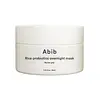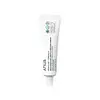What's inside
What's inside
 Key Ingredients
Key Ingredients

 Benefits
Benefits

 Concerns
Concerns

No concerns
 Ingredients Side-by-side
Ingredients Side-by-side

Water
Skin ConditioningDipropylene Glycol
HumectantGlycerin
HumectantGlyceryl Polymethacrylate
Lactobacillus/Rice Ferment
Skin Conditioning1,2-Hexanediol
Skin ConditioningDiglycerin
HumectantAmmonium Acryloyldimethyltaurate/Vp Copolymer
Oryza Sativa Bran Extract
Skin ConditioningAcrylates/C10-30 Alkyl Acrylate Crosspolymer
Emulsion StabilisingTromethamine
BufferingSaccharomyces/Rice Bran Ferment
HumectantEthylhexylglycerin
Skin ConditioningAdenosine
Skin ConditioningSodium Hyaluronate
HumectantAllantoin
Skin ConditioningDisodium EDTA
Water, Dipropylene Glycol, Glycerin, Glyceryl Polymethacrylate, Lactobacillus/Rice Ferment, 1,2-Hexanediol, Diglycerin, Ammonium Acryloyldimethyltaurate/Vp Copolymer, Oryza Sativa Bran Extract, Acrylates/C10-30 Alkyl Acrylate Crosspolymer, Tromethamine, Saccharomyces/Rice Bran Ferment, Ethylhexylglycerin, Adenosine, Sodium Hyaluronate, Allantoin, Disodium EDTA
Water
Skin ConditioningHouttuynia Cordata Flower/Leaf/Stem Water
AntimicrobialGlycerin
HumectantButylene Glycol
HumectantPanthenol
Skin Conditioning2,3-Butanediol
HumectantDicaprylyl Carbonate
EmollientMethyl Trimethicone
Skin ConditioningNiacinamide
Smoothing1,2-Hexanediol
Skin ConditioningPentylene Glycol
Skin ConditioningSqualane
EmollientCetearyl Olivate
Sorbitan Olivate
EmulsifyingSorbitol
HumectantDiphenylsiloxy Phenyl Trimethicone
Skin ConditioningSucrose Polystearate
EmollientHydrogenated Polyisobutene
EmollientPoly C10-30 Alkyl Acrylate
Emulsion StabilisingStearyl Dimethicone
EmollientCetyl Palmitate
EmollientCetearyl Alcohol
EmollientAcrylates/C10-30 Alkyl Acrylate Crosspolymer
Emulsion StabilisingPolyglyceryl-3 Distearate
EmulsifyingHydroxyethyl Acrylate/Sodium Acryloyldimethyl Taurate Copolymer
Emulsion StabilisingHydrogenated Olive Oil Decyl Esters
Emulsion StabilisingSorbitan Palmitate
EmulsifyingAminomethyl Propanediol
BufferingGlyceryl Stearate
EmollientSodium Acrylate/Sodium Acryloyldimethyl Taurate Copolymer
Emulsion StabilisingPolyisobutene
Polyglyceryl-6 Caprylate
EmulsifyingHydrogenated Lecithin
EmulsifyingCellulose
AbsorbentEthylhexylglycerin
Skin ConditioningPolyglyceryl-4 Caprate
EmulsifyingAdenosine
Skin ConditioningCandida Bombicola/Glucose/Methyl Rapeseedate Ferment
AntimicrobialOlea Europaea Oil Unsaponifiables
Skin ConditioningSodium Phytate
Sorbitan Isostearate
EmulsifyingGlyceryl Stearate Citrate
EmollientBeta-Sitosterol
Emulsion StabilisingMelia Azadirachta Leaf Extract
Skin ConditioningAllantoin
Skin ConditioningMelia Azadirachta Flower Extract
Skin ConditioningCaprylyl/Capryl Glucoside
CleansingSorbitan Oleate
EmulsifyingMadecassic Acid
Skin ConditioningOcimum Sanctum Leaf Extract
Skin ConditioningAsiaticoside
AntioxidantMadecassoside
AntioxidantMacadamia Ternifolia Seed Oil
EmollientPhytosterols
Skin ConditioningCurcuma Longa Root Extract
MaskingStearic Acid
CleansingCorallina Officinalis Extract
Skin ConditioningAsiatic Acid
Skin ConditioningTocopherol
AntioxidantCeramide NP
Skin ConditioningCholesterol
EmollientPhytosphingosine
Skin ConditioningCeramide Ng
Skin ConditioningCeramide Ns
Skin ConditioningCeramide AP
Skin ConditioningCeramide As
Skin ConditioningCeramide EOP
Skin ConditioningWater, Houttuynia Cordata Flower/Leaf/Stem Water, Glycerin, Butylene Glycol, Panthenol, 2,3-Butanediol, Dicaprylyl Carbonate, Methyl Trimethicone, Niacinamide, 1,2-Hexanediol, Pentylene Glycol, Squalane, Cetearyl Olivate, Sorbitan Olivate, Sorbitol, Diphenylsiloxy Phenyl Trimethicone, Sucrose Polystearate, Hydrogenated Polyisobutene, Poly C10-30 Alkyl Acrylate, Stearyl Dimethicone, Cetyl Palmitate, Cetearyl Alcohol, Acrylates/C10-30 Alkyl Acrylate Crosspolymer, Polyglyceryl-3 Distearate, Hydroxyethyl Acrylate/Sodium Acryloyldimethyl Taurate Copolymer, Hydrogenated Olive Oil Decyl Esters, Sorbitan Palmitate, Aminomethyl Propanediol, Glyceryl Stearate, Sodium Acrylate/Sodium Acryloyldimethyl Taurate Copolymer, Polyisobutene, Polyglyceryl-6 Caprylate, Hydrogenated Lecithin, Cellulose, Ethylhexylglycerin, Polyglyceryl-4 Caprate, Adenosine, Candida Bombicola/Glucose/Methyl Rapeseedate Ferment, Olea Europaea Oil Unsaponifiables, Sodium Phytate, Sorbitan Isostearate, Glyceryl Stearate Citrate, Beta-Sitosterol, Melia Azadirachta Leaf Extract, Allantoin, Melia Azadirachta Flower Extract, Caprylyl/Capryl Glucoside, Sorbitan Oleate, Madecassic Acid, Ocimum Sanctum Leaf Extract, Asiaticoside, Madecassoside, Macadamia Ternifolia Seed Oil, Phytosterols, Curcuma Longa Root Extract, Stearic Acid, Corallina Officinalis Extract, Asiatic Acid, Tocopherol, Ceramide NP, Cholesterol, Phytosphingosine, Ceramide Ng, Ceramide Ns, Ceramide AP, Ceramide As, Ceramide EOP
 Reviews
Reviews

Ingredients Explained
These ingredients are found in both products.
Ingredients higher up in an ingredient list are typically present in a larger amount.
1,2-Hexanediol is a synthetic liquid and another multi-functional powerhouse.
It is a:
- Humectant, drawing moisture into the skin
- Emollient, helping to soften skin
- Solvent, dispersing and stabilizing formulas
- Preservative booster, enhancing the antimicrobial activity of other preservatives
Acrylates/C10-30 Alkyl Acrylate Crosspolymer is a synthetic polymer. It is used to thicken and improve the texture of products. Due to its properties, it can prevent water and oil ingredients from separating.
Adenosine is in every living organism. It is one of four components in nucleic acids that helps store our DNA.
Adenosine has many benefits when used. These benefits include hydrating the skin, smoothing skin, and reducing wrinkles. Once applied, adenosine increases collagen production. It also helps with improving firmness and tissue repair.
Studies have found adenosine may also help with wound healing.
In skincare products, Adenosine is usually derived from yeast.
Learn more about AdenosineAllantoin is a soothing ingredient known for its protective and moisturizingg properties. Because of this, it is often added to products with strong active ingredients.
Studies show higher concentrations of this ingredient can promote wound healing.
Though it can be derived from the comfrey plant, allantoin is produced synthetically for cosmetic products to ensure purity.
Learn more about AllantoinEthylhexylglycerin (we can't pronounce this either) is commonly used as a preservative and skin softener. It is derived from glyceryl.
You might see Ethylhexylglycerin often paired with other preservatives such as phenoxyethanol. Ethylhexylglycerin has been found to increase the effectiveness of these other preservatives.
Glycerin is already naturally found in your skin. It helps moisturize and protect your skin.
A study from 2016 found glycerin to be more effective as a humectant than AHAs and hyaluronic acid.
As a humectant, it helps the skin stay hydrated by pulling moisture to your skin. The low molecular weight of glycerin allows it to pull moisture into the deeper layers of your skin.
Hydrated skin improves your skin barrier; Your skin barrier helps protect against irritants and bacteria.
Glycerin has also been found to have antimicrobial and antiviral properties. Due to these properties, glycerin is often used in wound and burn treatments.
In cosmetics, glycerin is usually derived from plants such as soybean or palm. However, it can also be sourced from animals, such as tallow or animal fat.
This ingredient is organic, colorless, odorless, and non-toxic.
Glycerin is the name for this ingredient in American English. British English uses Glycerol/Glycerine.
Learn more about GlycerinWater. It's the most common cosmetic ingredient of all. You'll usually see it at the top of ingredient lists, meaning that it makes up the largest part of the product.
So why is it so popular? Water most often acts as a solvent - this means that it helps dissolve other ingredients into the formulation.
You'll also recognize water as that liquid we all need to stay alive. If you see this, drink a glass of water. Stay hydrated!
Learn more about Water